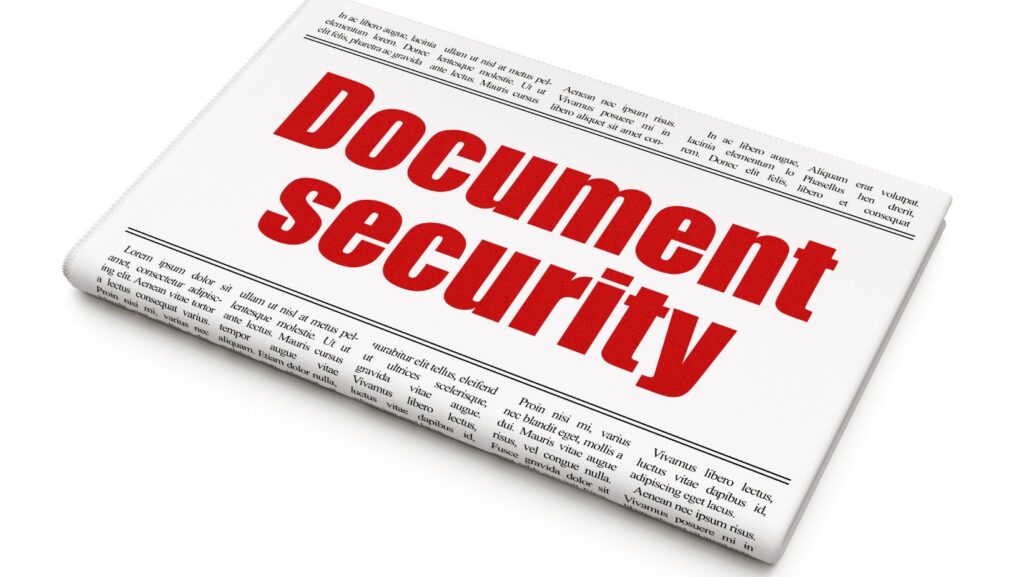
In the modern business world, document security is not just an option but a necessity. Sensitive documents are integral to business operations, and their security is crucial. Without proper protection, businesses face numerous risks that can disrupt operations and cause severe damage. This article explores these hidden risks and provides insights into safeguarding your business documents.
Types of Sensitive Documents
Sensitive documents encompass a wide range of information critical to business operations. Financial records, including profit and loss statements and tax filings, detail a business’s economic health. Employee records contain personal information, such as social security numbers and health records, which must be kept confidential. Customer data, including contact details and purchase history, must be protected to maintain trust and comply with privacy laws.
Intellectual property, such as patents, trademarks, and proprietary processes, represents a business’s competitive edge and requires stringent protection. Governmental documents, like licenses and permits, are crucial for legal operation and compliance. Each document type holds significant value and requires tailored security measures to ensure safety.
Common Threats to Document Security
The threats to document security are diverse and ever-evolving. Cybersecurity threats include hacking, where cybercriminals exploit vulnerabilities to gain unauthorized access to sensitive information. Phishing attacks deceive employees into revealing confidential information. Malware, malicious software designed to damage or turn off computer systems, can also lead to significant data breaches.

Physical threats are equally concerning. Theft of physical documents or devices storing sensitive information can lead to severe breaches. Document loss due to mishandling or natural disasters, such as fires or floods, poses a constant risk. Internal threats, including employee negligence or deliberate insider actions, can compromise document security within the organization.
Consequences of Poor Document Security
Poor document security can have catastrophic consequences. Data breaches expose sensitive information, leading to identity theft, financial fraud, and loss of customer trust. Legal repercussions can include fines, lawsuits, and regulatory penalties, particularly if the breach involves non-compliance with data protection laws.
Financial losses are often immediate and substantial, covering breach mitigation costs, legal fees, and compensation to affected parties. The long-term damage to a company’s reputation can result in lost business opportunities, decreased customer loyalty, and a tarnished brand image.
Governmental Documents Breach
Governmental documents, such as business licenses, permits, and compliance certificates, are particularly susceptible to security breaches. Losing or having these documents breached can halt business operations and attract legal scrutiny. For example, a lost health permit could shut down a restaurant, while a breached environmental compliance certificate could lead to hefty fines for a manufacturing plant.
Legal and regulatory repercussions can be severe, including fines, license revocations, and even criminal charges in extreme cases. Government records management services can provide additional protection by ensuring these documents are handled according to stringent security standards. Best practices for securing these documents include physical safes for paper records and encrypted digital storage for electronic versions. Regular audits and strict access controls further enhance security.
Ideal Practices for Enhancing Document Security
Enhancing document security involves a multifaceted approach. Implementing robust cybersecurity measures is essential. This includes firewalls to block unauthorized access, encryption to protect data in transit and at rest, and regular software updates to patch vulnerabilities. Physical security can bring secure storage solutions, such as locked cabinets and safes, to protect sensitive documents physically. Access controls ensure that only authorized personnel can handle these documents, while surveillance systems can deter and detect unauthorized access.

Employee training is crucial in fostering a culture of security awareness. Regular training sessions should cover best practices for document handling and the latest security threats. Regular audits and risk assessments help identify vulnerabilities and measure the effectiveness of security measures. An incident response plan ensures that your business is prepared to act swiftly during a security breach, minimizing damage and facilitating recovery.
Conclusion
The hidden risks of poor document security in business operations are significant and multifaceted. Proactive measures are essential to safeguard sensitive documents from various threats. By understanding these risks and implementing best practices, businesses can protect themselves from potential breaches and severe consequences. Ensuring robust document security today is crucial for maintaining operational integrity and trust in the future.










